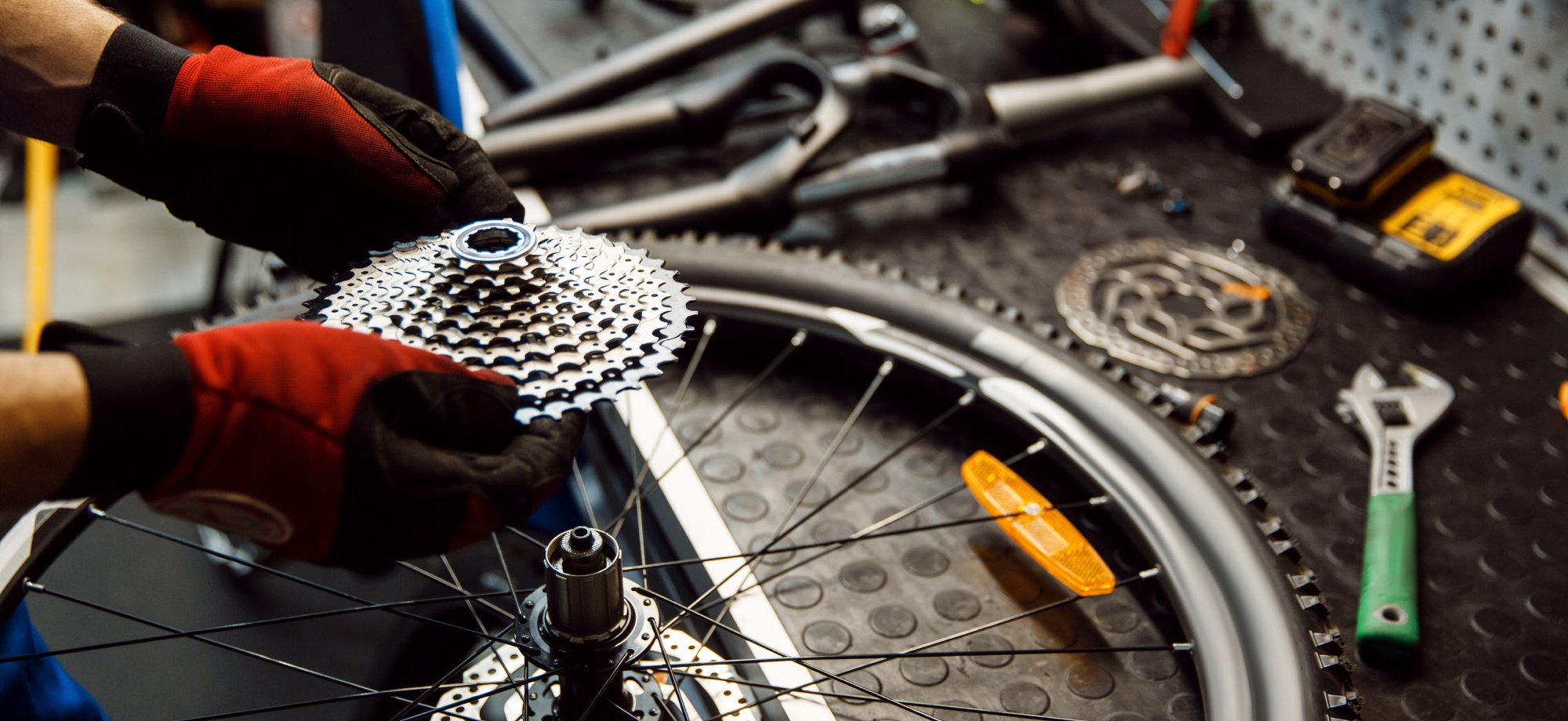Freehub Body Identification & Cassette Compatibility
Learn what it takes to match your wheels with your cassette.

What is a freehub body?
A freehub body is the part of a rear wheel where the cassette is attached to the hub. Within the freehub is a system of bearings along with a ratchet or pawl system that allows riders to coast. Depending on the manufacturer and model, the exact mechanism can vary so it’s very important to ensure that your cassette and freehub body are compatible.
Common freehub bodies
Shimano HG
First introduced in the 1980s, the Shimano HG (Hyperglide) freehub body replaced the freewheel as the most common freehub body on the market. When installing an HG cassette, there is only one way to align and orient the cogs, making it easy to ensure proper setup (so long as the spacers are placed in the correct spots). The cassette is then secured to the freehub body with a threaded lockring.

8-10 Speed HG
The first generation of Shimano HG freehub bodies is compatible with 8-10 speed HG cassettes (and some 11-speed mountain bike cassettes). This 8-10 speed configuration is still found on some lower-tier and older mountain bike wheels; however, it is unlikely that any brand-new road or gravel wheels will come with this version of the HG body.
11/12 Speed HG
The current standard for Shimano road bike cassettes, the 11/12 Speed HG freehub body is slightly longer than the old version. Other than that, the mechanism is the same. Backwards compatibility is simple with this freehub body as you can simply add a 1.85mm spacer to use it with 8-10 speed cassettes.
HG for SRAM (and other brands)
While Shimano created the HG freehub body, many other brands have also designed cassettes around the standard. SRAM 8-10 speed cassettes are compatible with nearly any HG freehub body and SRAM 11 speed road cassettes are compatible with the 11/12 Speed freehub body. The same applies to numerous aftermarket brands such as Microshift, Prestacycle, and Sunrace.
SRAM XD & XDR

SRAM XD
Designed for the demands of 1x mountain bikes, SRAM XD is a thread-on interface that allows for the use of a 10-tooth cassette cog. Found on SRAM’s 11 and 12 speed mountain bike cassettes, XD freehub bodies come stock on a variety of mountain bike wheelsets. Note, XDR cassettes are not compatible with XD freehub bodies.
SRAM XDR
Taking the tech from XD and extending it to fit wheels with road spacing, the XDR driver body can handle XDR cassettes and XD cassettes (with a 1.85mm spacer). For road and gravel bikes, XDR has become the most common standard for SRAM 12 speed cassettes.
Shimano Microspline

As mountain bikers demanded wider range cassettes for 1x, Shimano created the Microspline standard to accommodate them. Slightly shorter than an 11/12-speed HG body, the Microspline freehub body allows the smallest 10 tooth cog to sit outside of the freehub body. Microspline can be found on many of Shimano’s 11-speed mountain bike cassettes and all of Shimano’s 12-speed mountain cassettes. Shimano’s 12-speed GRX gravel groupset also shares the same Microspline cassettes as are found in the mountain bike lineup.
Campagnolo

Campagnolo has been consistent with their freehub body for many years and every Campy cassette from 9 through 12 speed uses the same standard. Recently, Campagnolo released the N3W freehub body to allow for compatibility with the Ekar 13-Speed cassette. The N3W freehub body is also backwards compatible with older Campy cassettes with the use of an adapter.
Common freehub Questions:
What’s the difference between a freehub and a freewheel?

Before freehubs, there were freewheels. On freewheels, the coasting mechanism and cogs are combined into a single unit that threads onto the hub. Typically, freewheels have between 5 and 7 cogs or are single speed. And while freehubs are certainly standard nowadays, freewheels can still be found on some cheaper bikes. Unfortunately, upgrading a wheel from freewheel to freehub requires switching out the entire hub – most of the time, it’s cheaper just to get a new wheel.
What’s the deal with Shimano’s 12-speed only Freehub?

Currently only found on Shimano’s top-of-the-line Dura-Ace and non-Microspline GRX wheelsets, this new freehub body looks a lot like Microspline, but it’s not the same! Shimano designed what they’re calling the “HG Spline L2” freehub specifically for the contours of their 12-speed HG cassettes and, in doing so, they were able to shave weight off the product. So, unless you are in the market for the Dura-Ace or GRX wheelset, there is no need to worry about this funny little exception to the rules.
What freehub body do I need for single speed?

While many single speed bikes use a freewheel or other single speed system, it is totally possible to convert a freehub for use with single speed. For Shimano HG freehubs, there are many kits available that allow for a single speed cog to be mounted onto HG splines. For SRAM XD, the options are scarcer, but it can be done. The same with Microspline.
When converting to single speed, it’s important to consider how you will achieve chain retention. If your frame has horizontal dropouts, this may not be an issue; however, other setups will require additional measures such as a chain tensioner or an eccentric bottom bracket. It is also a good idea to do some research about optimizing your chainline.
